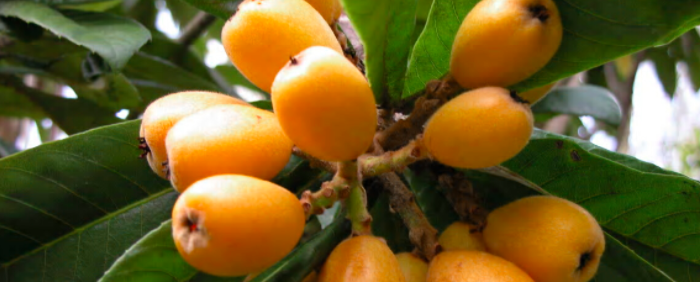
The Japanese loquat (Eriobotrya japonica) is the fruit of the loquat, it is also called loonstrife or bibasse, and is classified among the berries. The loquat is a fleshy and rounded fruit measuring between 3 and 7cm, its orange color indicates that the fruit has reached maturity. The loquat of Japan has a smooth skin slightly downy. It is a juicy fruit with big seeds that are not edible because toxic, its taste is fresh and slightly acidulous.
Culture, maintenance and harvest of loquats from Japan
The loquat is a fruit tree that crashes at any time of the year but it is advisable to wait until the end of the frosts. It adapts to normal soils, but prefers to be planted in a rich and well-drained soil. Flowering takes place at the end of autumn, between November and February. The flowers are small and clustered, they are also very fragrant and perfume the winter gardens. The loquat is very sensitive to frost, it must be protected during the winter or back inside if it is planted in pots. The harvest of loquats of Japan is done at the end of spring. The conservation of loquats in Japan is very difficult because the fruit is very poor, so it is better to use it soon after harvest.
Use of loquat from Japan
The loquat is a fruit rich in vitamins PP, B, C, but also potassium, phosphorus and magnesium. There are many recipes for loquats from Japan, the fruit can be eaten fresh, but also in jams or jellies, or married with salty meat dishes, such as poultry. We must be very careful not to include nuclei in the preparation because they are very toxic.